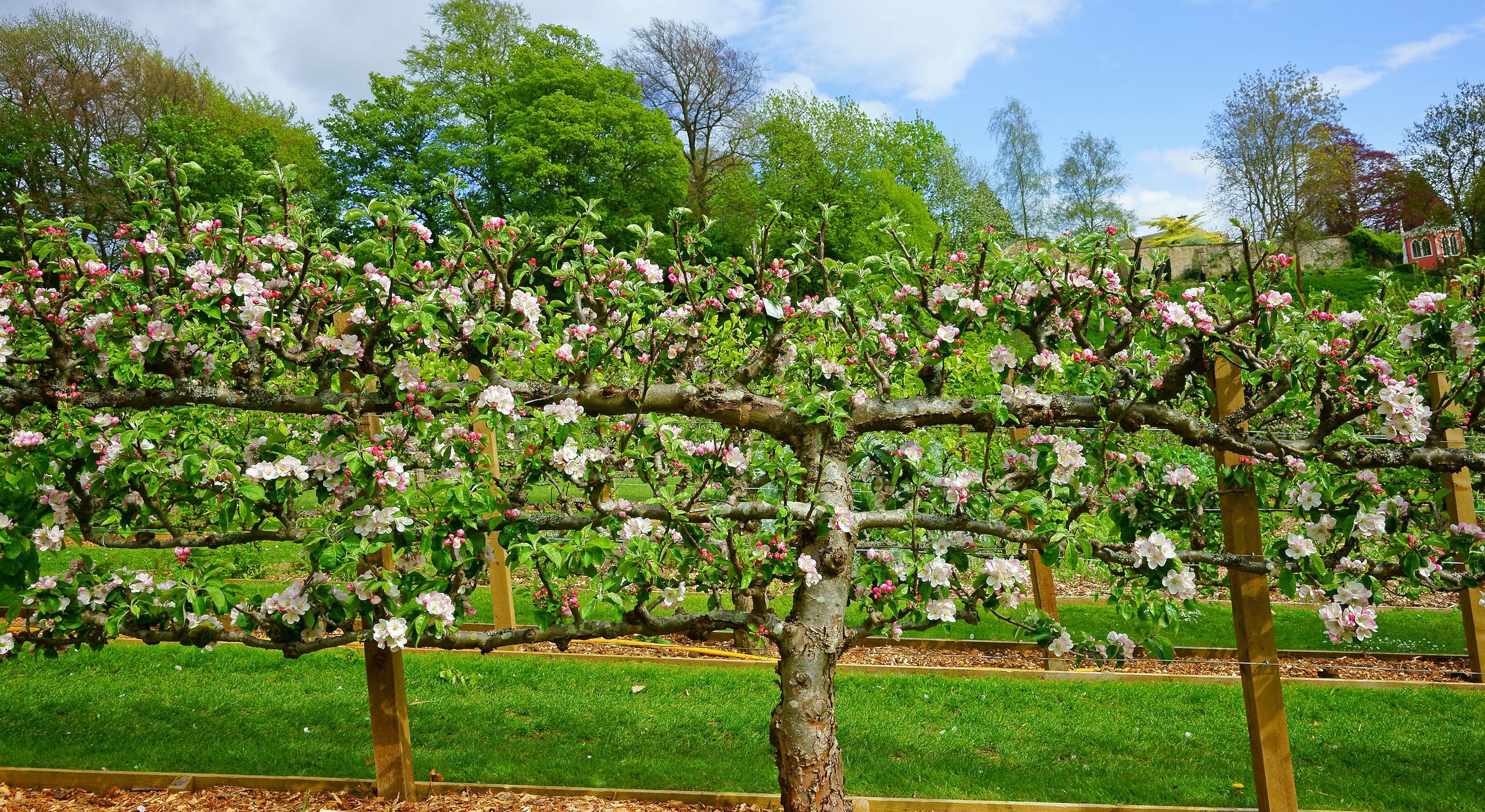
Specialist Pruning
Damage caused by wind and storms, climbing plants such as Roses, Wisteria often get ripped off the wall or pergola breaking stems, wires and supports. Careful pruning is required to be able to re-attach and support damaged growth. Check all ties and wires holding plants that they are not too tight. I have often found wire strangling Roses, Wisteria, Honeysuckle and trained fruit trees.
When to Prune
This question is different for most plant groups, the general rule of thumb is prune after flowering for shrubs.
Roses
Bush Roses, February – March is the best time
Climbing Roses – Late summer is the time to cut out all the old flowered stems, tie in new growth for next year's flowers
Rejuvenating Old Roses – Autumn/Winter subject to not severe frosts?
Wisteria
January – February proper tidy up prune. Cut out dead stems, thin back and promote short spurs for flowering. Tie in and support, using new wire and strong vine eyes. Summer prune – July/August cut back all growth to 5-6 leaves, creating spurs. Remove growth climbing in through windows, up in the eaves, and tiles!
Please do ask me to come and visit if you have any problems
Fruit Trees
Apples and Pears – Bush or standard trees prune when there are no leaves, the tree is dormant. Create a wine glass or goblet shaped tree, open in the centre to allow light and air to help ripen fruit. Two old sayings " A wood pigeon should be able to fly through the middle of an apple tree" and... " You should be able to throw your hat through the middle of a fruit tree". Remove criss-crossing branches, promote short spurs for flowers and fruit, nothing cut back too drastically or you get masses of growth and no fruit.
Trained Apples, Pears, Peaches, Nectarines, Cherries, Plums, best pruned August-September, reduce growth to 3-4 buds, reveal fruit for ripening and promote shoot growth for flowering next year. Young trees need to be tied in, especially growth on Peaches and Nectarines.
Grape Vines
Prune in Winter, late November through to the end of January before the sap starts to rise. Vines can 'bleed to death' if pruned in February - April. Cut back side shoots to two buds and keep the main stems to a minimum of one to three depending on the shape, form, or growing system you are using. There are plenty of training systems to choose from. Cordon, Guiot... Training and pinching out is carried out in the Spring-Summer. Cut summer growth back to just in front of the bunches of grapes.
Olives
Prune early Spring. It can be hard pruned to keep the tree smaller, but you will get less fruit. Flowers and fruit grow on one-year-old wood. Keep the fruit tree open, cutting out old and criss-crossing branches.
Figs
Prune once the risk of frost has gone, cut out any frosted stems and blackened damaged fruits. Figs can be wall-trained or bush grown. Pinch back growing tips to 5-6 leaves to make the plant more bushy, also allowing more air and light to produce more fruit.
Pruning of Old Overgrown Apples and Pears
Restoring venerable trees back into shape or trees that haven't been pruned for many years can be very daunting. This often means using the ladders and cutting your way into the centre of the tree to open it up with pruning saw and chainsaw!! An old saying is 'A pigeon should be able to fly through an apple tree!' Severe pruning should be spread our over 2-3 years - less shock to the tree, this means less regrowth and still fruit. Cutting the tree back all over will cause masses of 'water shoots' - lots of growth, with little or no fruit.








